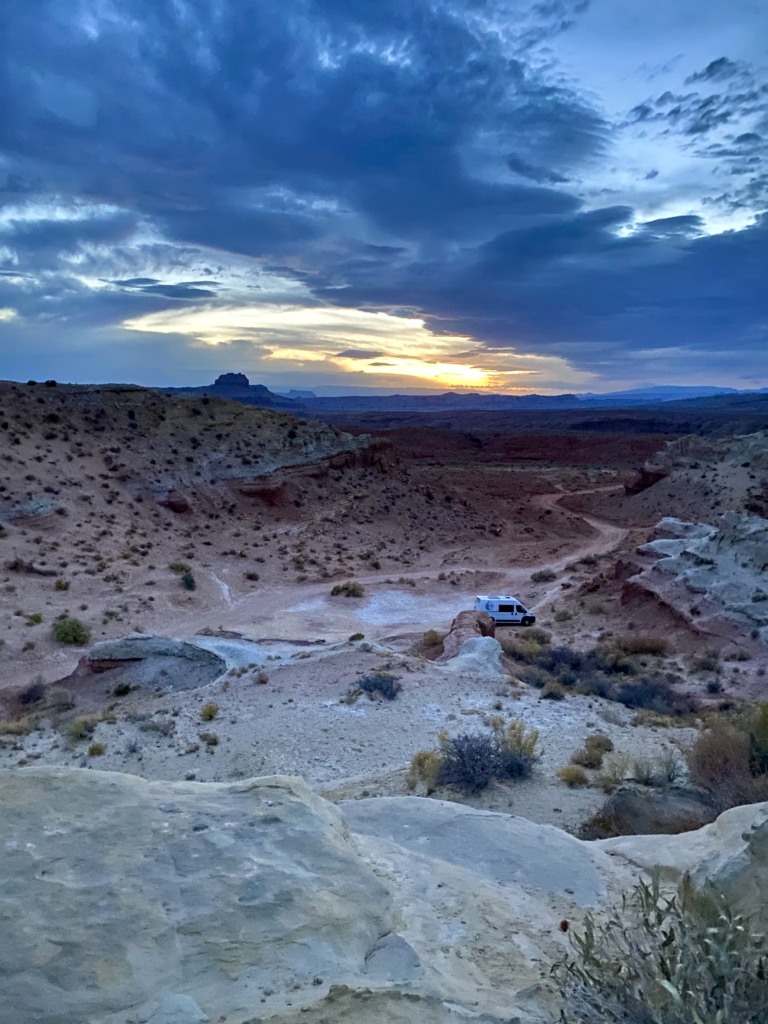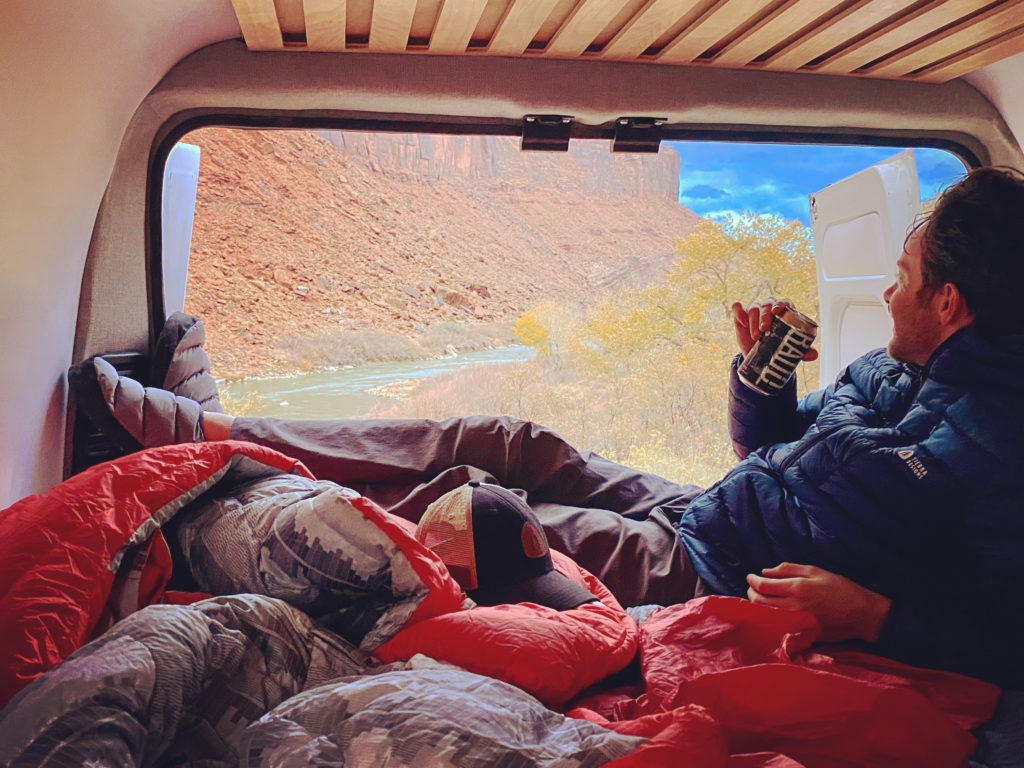I’ve got to say that I had my doubts about the vanlife craze that continuously swept across my Instagram feed. All these people, living in close quarters on their own or with a partner (dog or human variety), driving across the country, sitting in traffic, battling road fatigue, showering in campground bathrooms, surrounded by people on roads and in National Parks, not really my cup of tea. I wouldn’t consider myself a typer-twoer, but I’m not afraid to get a little uncomfortable if it means truly getting deep into the backcountry and escaping it all. Packing up a bag and hitting the trail had been the only way I’ve explored the great outdoors. However, when COVID hit it meant a change of vacation plans and mindset. Instead of backpacking up in Banff National Park or glacier hunting in Iceland it seemed as though I was States bound, so why not see what all the rage was about. One of Sierra Designs partners, Native Campervans, graciously offered to provide our adventure-mobile to explore the deserts of southern Utah. Vandy Warhol, a Ram ProMaster, was decked out with a full functioning dine-in kitchen, comfy bed with the added touch of a Backcountry Bed Duo, and solar panel to charge our devices when it was time to get on the grid, all put together in a stylish and modern package – not quite the dirtbag experience I had imagined.
Day 1 we pointed the van West and hit the road, hoping to catch some great shoulder season hiking and backpacking. The comfortable ride and amenities in the back made the long haul a little bit more bearable (for someone who isn’t a fan of road trips) and eventually we made it to the first night’s stop – Goblin Valley. The sun was just starting to head toward the mountains when we pulled up to the ranger station and were informed that, unfortunately, the campsite was full. If we had been in a tent this could have been quite challenging, finding a campsite in the dark can be difficult, but since we had the campervan we took the rangers’ advice and headed back out onto the road to look for an open dispersed campsite. Luckily enough, our first dirt pull off was entirely empty allowing us to watch the sun slip down past the enchanting red rock formations. When it was time to hit the sack, there was no need to laboriously blow up an air pad, pitch a tent or adjust the sleeping arrangements to get comfortable. My head hit the pillow and I closed my eyes surrendering to sleeping and thought, “Man I could get used to this”.

Day 2 the plan was to continue down towards Grand Escalante. Again, the typically arduous task of packing up was removed and we headed out fresh, without just having the experience of wrestling a tent back into it’s burrito bag. The drive past Goblin Valley, through Capitol Reef National Park and deep into southern Utah was absolutely awe-inspiring. After a hike up to Lower Calf Creek to stretch the legs and get a few miles under our belt, we ended up parking under a lone tree in a creek bed about a mile away from the Peek-A-Boo Canyon Trailhead. The weather was mild and the thought of sleeping under the stars was compelling, so we pulled out the Meteor tent and began pitching. It seemed, however, that Mother Nature really wanted us to completely embrace van life. Dark, thunderous clouds began to roll across the open desert sky towards us and what had started as a tranquil breeze became a howling, destructive gail. With the wind pulling out stakes and threatening to collapse the half-built Meteor tent, we decided to throw in the towel and hop back into the van. Moments after closing the door and taking a sigh of relief the sky opened up and the rain came down in sheets, Vandy had saved the day.
I’m not saying that I haven’t stayed in or wouldn’t brave those types of conditions again, but when faced with the thought of waking up drenched and exhausted from a night of weathering a storm in a tent, I started to understand even more the draw of van life.
Day 3 began with an epic hike wiggling through slots canyons. As an avid hiker from Colorado, I have spent a lot of time on the trail. However, the desert with it’s strange formations and desolate beauty is an experience unlike any other hiking I’ve done. From there the next stop was originally up towards Fish Lake where we were going to do an overnight backpacking trek, but with the foul weather of the night before fresh in our minds, we decided to instead head back towards Moab to experience more of the wonders the desert had to offer.

Day 4 we awoke early to a slight dusting of snow on the ground, but we were fresh from a comfortable night’s sleep. We headed on to our remaining hikes including Fishers Towers Trail, Deadhorse Rim and Surprise Arch. These trails were all fairly far apart from one another, but having the campervan allowed us to cover a lot more ground then we would have been able to if we had been backpacking. It was a full day of scoping out epic terrain, so by the time we got back into the van to head home it was one of those drives filled with satisfied silence. I thought about the whole experience and how my expectations were completely blown away from what I originally had thought about the campervan lifestyle. As a campervan nube, I also learned a few things:
- Spending time in the backcountry doesn’t always mean you have to rough it.
- When hitting tough terrain or piling on mileage, having a comfortable basecamp campervan to spend the night before can make your time on the trail much more enjoyable.
- A campervan can be a lifesaver when things get unpredictable.
- If you have a full agenda of trails you want to hit a campervan can make things a lot easier, especially if the trailheads are fairly dispersed
While it’s hard to say that I was wrong (so I won’t), I will concede that the campervan life is pretty incredible. For those of you that are wanderers and nomads looking to experience all that Mother Nature has to offer, it’s time to elevate your travel game and be a part of the vanlife movement.



